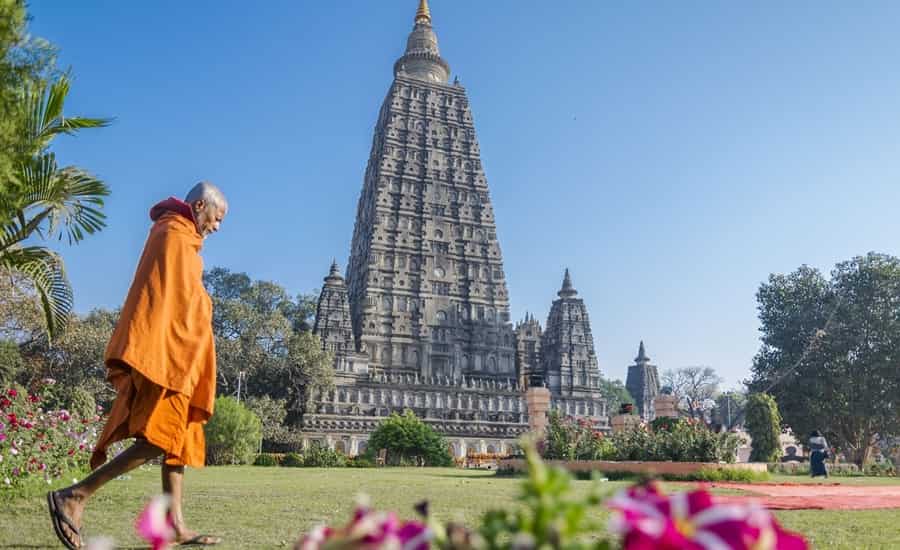A Comprehensive Guide to Planning a Buddhist Tour in India

Embarking on a Buddhist pilgrimage tour in India is a transformative journey that promises spiritual rejuvenation and cultural enrichment. India, often referred to as the cradle of Buddhism, boasts an array of sacred sites intricately woven into the tapestry of the religion’s history. This detailed guide aims to equip you with the knowledge and insights needed to plan an immersive and enlightening pilgrimage, encompassing historical landmarks, vibrant monastic communities, and serene retreats spread across the subcontinent.
Research and Preparation
Historical Background
Delve into the life of Siddhartha Gautama, the Buddha, and the historical significance of the sites associated with his life. Familiarize yourself with key events such as his enlightenment in Bodh Gaya, the first sermon in Sarnath, and his passing in Kushinagar.
Itinerary Planning
Create a comprehensive itinerary, considering the distances between sites and the modes of transportation available. Prioritize destinations such as Bodh Gaya, Sarnath, Kushinagar, Lumbini (in Nepal), Rajgir, Vaishali, and Sravasti, each offering unique insights into the Buddha’s journey.
Best Time to Visit
Plan your trip during the winter months (October to March) for comfortable weather. Avoiding the monsoon season is advisable to ensure smooth travel and site exploration.
Logistics
Check the validity of your passport and acquire the necessary visas. Consult your healthcare provider for vaccinations and health precautions. Consider travel insurance and carry a copy of important documents.

Destinations and Itinerary
Bodh Gaya
Immerse yourself in the spiritual aura of Bodh Gaya, where the Buddha attained enlightenment. Explore the Mahabodhi Temple Complex, the Bodhi Tree, and monasteries like the Thai Monastery and Tibetan Monastery.
Sarnath
Discover the profound teachings of the Buddha at Sarnath, where he delivered his first sermon. Visit the Dhamek Stupa, Mulagandha Kuti Vihar, and the Sarnath Archaeological Museum for a comprehensive understanding of Buddhist history.
Kushinagar
Reflect on the impermanence of life at Kushinagar, the site of the Buddha’s Mahaparinirvana. Explore the Ramabhar Stupa and Nirvana Temple, experiencing the serene atmosphere that pervades this sacred location.
Lumbini (Nepal)
Although outside India, Lumbini is a crucial pilgrimage site as the birthplace of Siddhartha Gautama. Explore the Maya Devi Temple, the Sacred Garden, and the international monastic zone, reflecting on the beginnings of the Buddha’s journey.
Rajgir, Vaishali, and Sravasti
These lesser-explored sites offer historical depth. Rajgir, with its Gridhakuta Hill and Vulture’s Peak, Vaishali with the Buddha’s sermons, and Sravasti with the Jetavana Monastery, contribute to a comprehensive understanding of Buddhism.
Accommodation and Transportation
Accommodation Selection
Choose accommodations that align with your preferences and budget, ensuring proximity to the pilgrimage sites. Options range from budget guesthouses to luxurious hotels, catering to diverse traveler needs.
Transportation
Leverage India’s well-connected railway network for efficient travel between cities. Domestic flights are available for longer distances. Hiring local guides or joining group tours can enhance your experience and provide valuable insights.
Cultural Sensitivity and Etiquette
Respect Local Customs
Adhere to cultural norms such as dressing modestly, removing shoes before entering sacred spaces, and maintaining a respectful demeanor. Seek permission before taking photographs, especially within monasteries.
Participation in Rituals
Embrace the spiritual ambiance by participating in meditation sessions and rituals with humility. Gain a deeper understanding of local customs and practices to enhance your overall experience.
Practical Tips and Safety
Essentials to Carry
Pack essentials such as comfortable clothing, a hat, sunscreen, and a reusable water bottle. Prioritize bottled water to avoid health issues, and be cautious with street food to prevent any food-related concerns.
Document Safety
Safeguard your valuables and keep copies of important documents, including your passport and travel insurance. Stay informed about local customs and traditions to navigate cultural nuances and ensure a smooth and secure journey.
Immersive Experiences and Spiritual Practices
Meditation Retreats
Consider participating in meditation retreats offered at various monasteries and meditation centers. These immersive experiences allow you to delve deeper into the practice of mindfulness and meditation, providing a unique opportunity for personal introspection and spiritual growth.
Interaction with Monastic Communities
Engage with the local monastic communities to gain insights into their way of life and the teachings they follow. Attend discourses, rituals, and discussions to deepen your understanding of Buddhism as a living tradition.
Pilgrim Circuits
Explore lesser-known pilgrim circuits and trails that connect multiple sites. These routes often provide a more authentic experience, allowing you to witness the daily lives of local communities and absorb the spiritual energy that permeates the landscape.
Culinary Exploration
Delight your senses by indulging in the local cuisine of each region. Many Buddhist pilgrimage sites are located in culturally rich areas with distinct culinary traditions. Savor vegetarian and vegan delights, often influenced by the principles of ahimsa (non-violence) practiced by Buddhists. Engage in mindful eating practices, appreciating the flavors and nutritional value of each meal. Local markets and food stalls offer an array of delicacies that reflect the diversity of India’s culinary heritage.
Sustainable Travel Practices
Responsible Tourism
Embrace responsible tourism practices to minimize your environmental impact. Choose eco-friendly accommodations, support local artisans, and adhere to waste disposal guidelines. Leave the pilgrimage sites as you found them, respecting the delicate balance of the surrounding ecosystems.
Community Engagement
Connect with local communities by participating in cultural events and supporting local businesses. Your engagement contributes to the sustainable development of these regions and fosters a positive exchange between pilgrims and locals.
Transportation Choices
Opt for eco-friendly transportation options when possible. Consider using public transportation or sharing rides to reduce your carbon footprint. Walking or cycling between nearby sites not only aligns with Buddhist principles of simplicity but also allows for a more immersive experience.
Reflection and Integration
As your pilgrimage concludes, take time for reflection and integration of the experiences gained. Journaling, meditation, or simply spending moments in quiet contemplation at the pilgrimage sites can help solidify the lessons learned. Consider how the teachings of the Buddha resonate in your daily life and how you can integrate mindfulness and compassion into your ongoing spiritual journey.
Continuing the Journey
The culmination of your Buddhist pilgrimage in India marks the beginning of a continued spiritual journey. Stay connected with local and online Buddhist communities, read sacred texts, and continue practicing mindfulness in your daily life. The lessons learned during your pilgrimage can serve as a foundation for ongoing personal growth and contribute to the global community of individuals seeking enlightenment and inner peace.
Conclusion
Embarking on a Buddhist pilgrimage in India transcends a mere tour; it is a profound exploration of spirituality, culture, and self-discovery. By incorporating immersive experiences, respecting local traditions, and adopting sustainable travel practices, your pilgrimage becomes a transformative odyssey. May the wisdom gained during this journey continue to guide you on the path to enlightenment, fostering a deep and enduring connection with the essence of Buddhism.
- Also Read: Top 10 Must-Visit Destinations in Ayodhya









